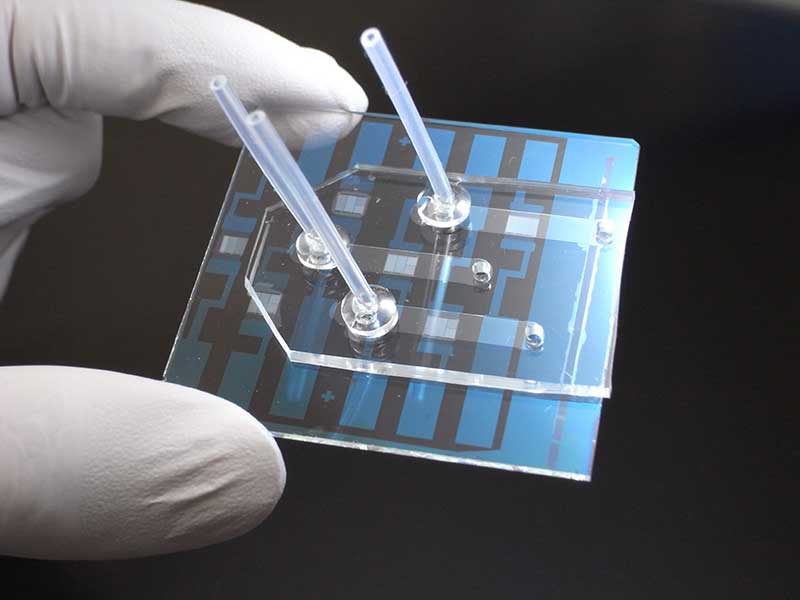Abstract
Stochastic events in gene expression, protein synthesis and metabolite synthesis or degradation lead to cellular heterogeneity essential to life. A novel experimental tool is required to understand this heterogeneity since conventional bulk experiments are averaging cell-to-cell variation and masking individual cellular properties. To build the novel experimental system for single cell analysis, we have developed a microfluidic device containing an electroactive microwell array (EMA) for parallel manipulation and analysis of large number of single of cells. The EMA has patterned electrodes at the bottom of cell-sized microwells to induce electrostatic functions including dielectrophoresis (DEP) and electroporation (EP). The single cells introduced into the device are deterministically trapped into cell-sized microwells using DEP, followed by lysis of trapped single cells using EP for the downstream analysis. The feasibility of the device was successfully demonstrated by measuring intracellular APT concentration at the single-cell level.
 Electroactive microwell array
Electroactive microwell array
Recently, we have developed electroactive double-well array (EdWA) consisted of cell-sized trap-wells and high aspect ratio reaction-wells. We achieved very high cell capture efficiency of 95% for PC3 cells (prostate cancer cell line). The feasibility of the EdWA for an on-chip single-cell analysis was demonstrated by measuring the intracellular β-galactosidase (β-gal) activity of the trapped single PC3 cells. The use of this method should greatly help analysis of intracellular materials of single cells with very high efficiency to understand the cellular heterogeneity.
Collaboration
- RIKEN
Sponsor
- JSPS
- JST
Reference
- Kim, S. H., Yamamoto, T., Fourmy, D. and Fujii, T.: Small 7 (2011), 3239-47.
- Kim, S. H. and Fujii, T.: Lab Chip 16 (2016), 2440.